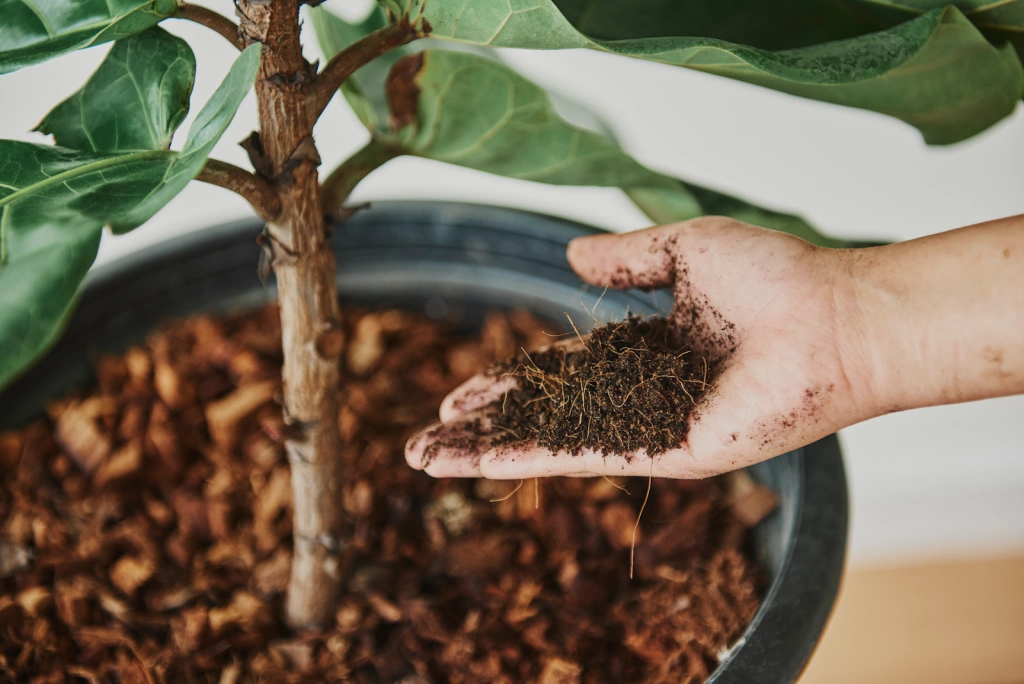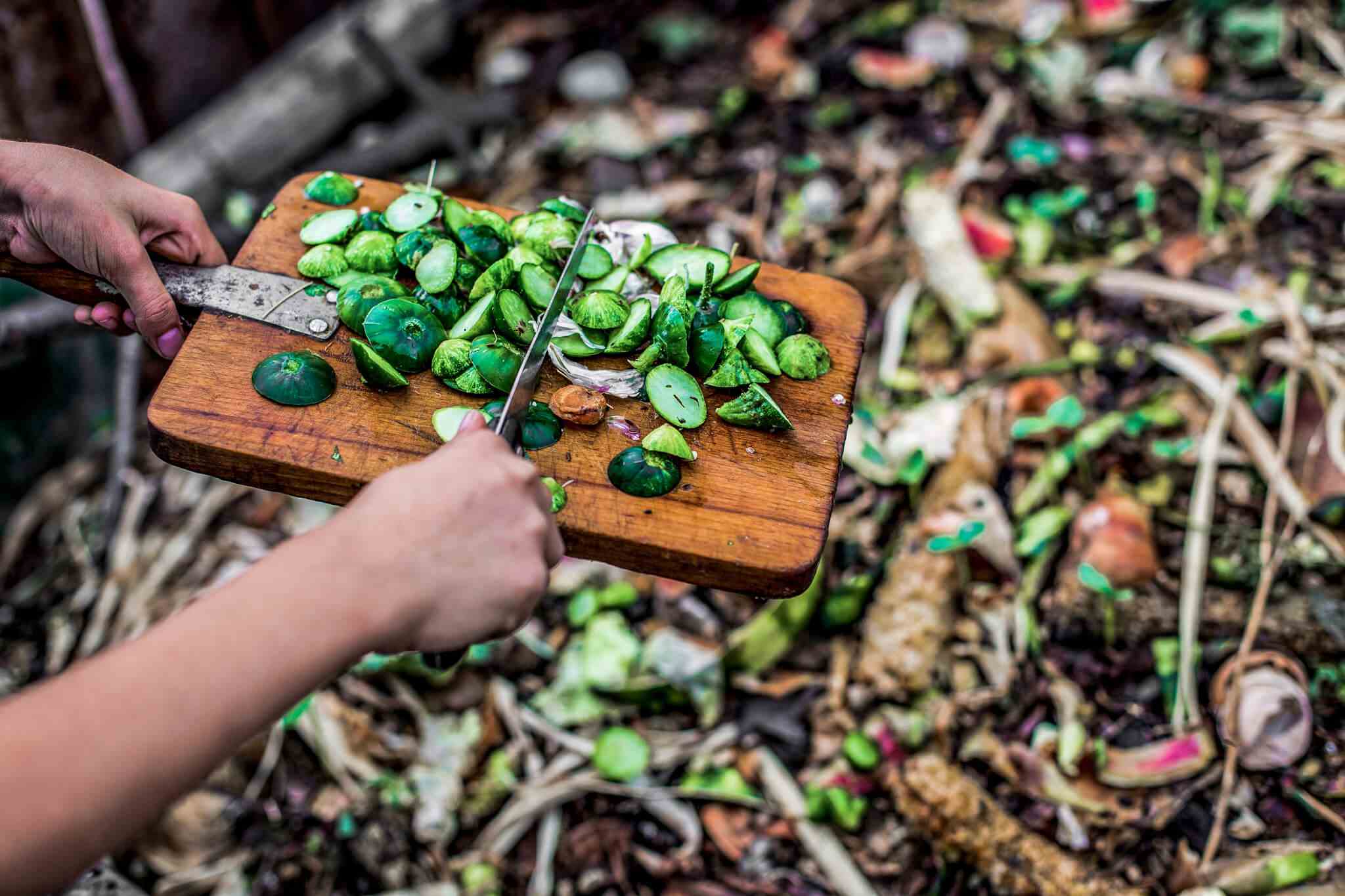5 Practical Composting Tips for Flats: Tried-and-Tested by Women Who’ve Made It Work
Composting is often associated with expansive gardens, but even if you live in a flat, it is possible to reduce your food waste and make use of kitchen scraps. Urban dwellers, like Kavya Dhobale and Jayanti Sahoo, have shown how it is not only possible but also beneficial to compost in limited spaces.
Kavya, a former nurse turned organic farmer, uses vermicomposting to create rich compost from kitchen waste, while Jayanti, a passionate gardener, has turned her terrace into a mini jungle, relying on organic composting methods like cow dung to grow a diverse array of plants.
Composting offers numerous environmental benefits, including reducing landfill waste and creating nutrient-rich soil for plants. Even without outdoor space, urban dwellers can successfully compost by using the right methods.
Here is a guide to five effective composting techniques for flats, detailing how they work, how to get started, and why they are beneficial.
1. Vermicomposting
How it works
Vermicomposting, or worm composting, is a technique where earthworms (particularly red wigglers) break down food scraps, turning them into nutrient-rich compost. The worms consume organic materials like fruit and vegetable peels, coffee grounds, and even small amounts of paper, producing rich compost in the form of worm castings.
 Vermicomposting is space-efficient, odour-free, and effective, making it ideal for flats; Picture source: Werms.inc
Vermicomposting is space-efficient, odour-free, and effective, making it ideal for flats; Picture source: Werms.inc
Kavya Dhobale, after her experience in healthcare, shifted her focus to organic farming and began setting up vermicomposting beds. She now manufactures around 20 tonnes of rich vermicompost every month. “It takes about 60 days to prepare vermicompost using cow dung,” she explains. Beyond selling vermicompost, she has set up the Krushi Kavya Agro Vermicompost Training Centre to educate farmers and promote chemical-free farming.
Why is it helpful?
Vermicomposting is space-efficient, odour-free, and effective, making it ideal for flats. In Indian urban settings, it is particularly popular because it does not require large outdoor spaces. Additionally, the worm castings produced are rich in nutrients, making them perfect for people who grow herbs, vegetables, or ornamental plants in their flats.
How to start:
- Purchase or build a worm bin (easily available online or at local gardening stores).
- Add bedding material like shredded newspaper, coir, or coconut husk.
- Keep the bin in a cool, dark place, ensuring the bedding is moist but not soggy.
- After a few months, harvest the nutrient-rich worm castings for your plants.
2. Self-watering composting
How it works
Self-watering composting systems are a form of aerobic composting that creates a moisture-controlled environment, making them perfect for small urban spaces. These bins are designed to manage moisture levels and allow for easy aeration. The concept is easy, food scraps are added, and the bin’s self-watering feature maintains ideal conditions for decomposition.
Why is it helpful?
These bins are an excellent option for urban households, where temperatures can be high, and humidity levels often fluctuate. The self-watering feature makes sure that the compost remains moist without constant attention. Moreover, they are compact and suitable for balconies or terraces, which are common in urban flats.
How to start:
- Purchase a self-watering compost bin (many are available in India) or DIY using a container with drainage and a self-watering tray.
- Add layers of food scraps (vegetable peels, fruits, and non-oily foods).
- Add dry material like sawdust or dry leaves to balance moisture levels.
- Check the moisture levels every few weeks, and once the compost is ready, use it to enrich your plants.
3. Bamboo basket composting
How it works
This method involves using bamboo baskets, commonly found in Indian households, to create a composting environment. Bamboo baskets are excellent for aerating the compost and allowing air to circulate through the layers of food waste. The basket system helps speed up the decomposition process by keeping the compost exposed to the air, which promotes the aerobic process.
 Bamboo baskets are excellent for aerating the compost; Picture source: Woven Wood
Bamboo baskets are excellent for aerating the compost; Picture source: Woven Wood
Why is it helpful?
Bamboo is readily available in many parts of India, making this a low-cost and sustainable option. The basket allows for easy aeration, which prevents foul smells and guarantees a faster breakdown of waste. This method works well in apartments with limited space and is particularly useful in warmer climates like those found in many urban areas of India.
How to start:
- Use a shallow bamboo basket or create a compost bin with bamboo slats to allow airflow.
- Layer kitchen scraps (vegetable peels, fruit skins, tea leaves, etc) with brown materials like dried leaves, straw, or sawdust.
- Stir the compost once a week for better aeration.
- After two to three months, your compost will be ready for use.
4. Cow dung composting
How it works
In many parts of India, cow dung has been traditionally used as a base for composting due to its high nutrient content. This method involves mixing cow dung with kitchen waste and other organic materials like dry leaves, grass, and crop residues. The compost is then left to decompose in a bin or heap.
 You can mix cow dung with kitchen waste and other organic materials to make the compost; Picture source: GreenDNA
You can mix cow dung with kitchen waste and other organic materials to make the compost; Picture source: GreenDNA
Jayanti Sahoo, a passionate gardener, has turned her 350 sq ft terrace into a lush garden, using cow dung compost to nurture her plants. “Before transferring the mix into the pot, place a thick layer (4-5 inches) of dried leaves on the pot, which will turn into compost later,” she advises. Her use of cow dung compost has made sure her plants are free from chemicals, contributing to the sweeter taste of her fruits.
Why is it helpful?
Cow dung is readily available in rural areas and urban settings with access to local dairy farms, making it a cost-effective and natural composting material. It is rich in nitrogen, which can speed up the decomposition process and create compost that is perfect for enriching the soil, particularly for plants like herbs, vegetables, and flowers commonly grown in Indian homes.
How to start:
- Collect cow dung from local dairy farms (or purchase from organic markets).
- Mix the cow dung with kitchen scraps and dry leaves.
- Place the mixture in a compost bin or heap, guaranteeing regular turning for aeration.
- In about two to three months, you’ll have rich, organic compost that’s perfect for your plants.
5. Zero waste composting
How it works
Zero waste composting is a minimalist approach, where food scraps are collected in small containers and either composted at home or through a community composting initiative. This method focuses on reducing waste generation and making composting as efficient as possible with minimal space.
Why is it helpful?
This method requires very little equipment and is perfect for city dwellers looking to manage kitchen scraps without committing to large-scale composting systems. In Indian cities, where space is often at a premium, this method can be practical. Additionally, it aligns with the growing zero-waste movement, encouraging waste reduction at every level.
 Keep a small container for collecting kitchen scraps like vegetable peels and coffee grounds in zero waste composting; Picture source: KTCHNrebel
Keep a small container for collecting kitchen scraps like vegetable peels and coffee grounds in zero waste composting; Picture source: KTCHNrebel
How to start:
- Keep a small container for collecting kitchen scraps like vegetable peels, fruit skins, coffee grounds, etc.
- If you have a balcony or terrace, use a simple plastic bin with holes for aeration to collect your scraps.
- Alternatively, take your food scraps to a community composting site or work with a local waste management company to make sure the scraps are composted properly.
Edited by Vidya Gowri
News